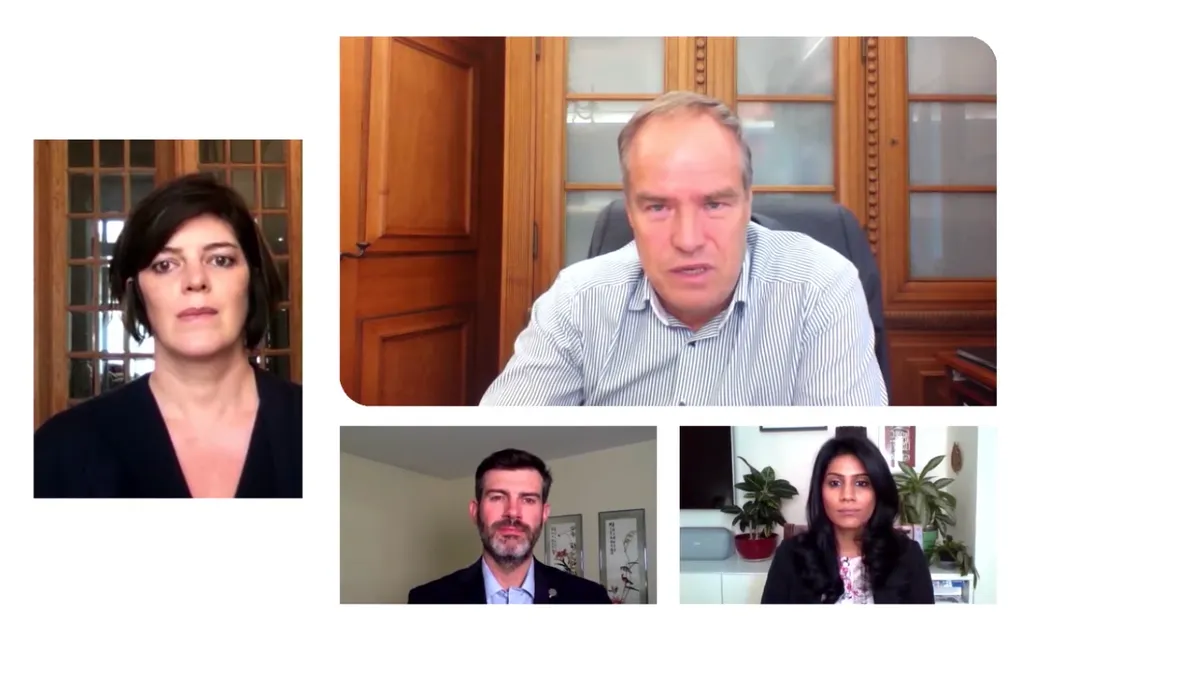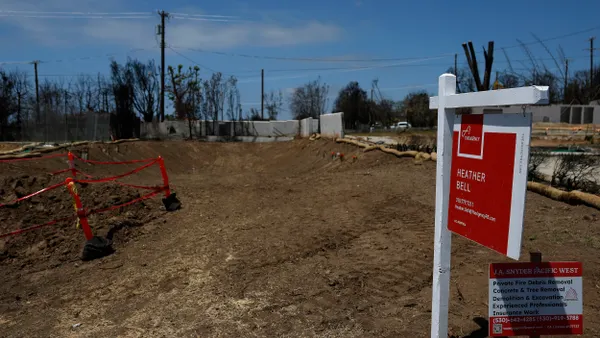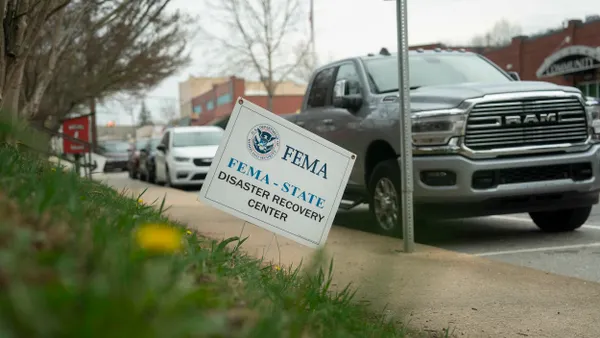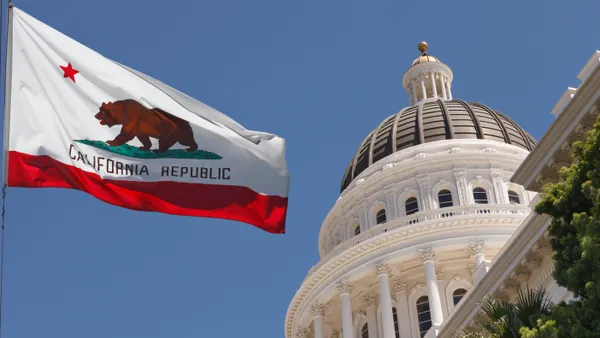Dive Brief:
- To meet the Paris climate accord's ambitious 2030 emissions reduction targets, cities must "stop spending so much time collecting data" and spend more time "taking the strong action that science says is required" to cut emissions, said Antha Williams, global head of climate and environment programs at Bloomberg Philanthropies, on a Wendesday webinar.
- The "Unlocking City Ambition" webinar, hosted by Google and the Global Covenant of Mayors for Climate & Energy (GCoM), gathered a number of leaders from public and private sector organizations to push this message of urgency around climate action. The event highlighted how global cities can "leapfrog the constraints associated with lengthy climate studies" by using Google's Environmental Insights Explorer (EIE) tool to virtually assess their carbon footprint and renewables potential.
- EIE uses Google's aggregated mapping data and emissions insights to estimate the carbon footprint of a city's buildings and transportation services, and to illustrate the city's solar energy potential. Earlier this month, Google announced the expansion of this tool to 3,000 cities worldwide.
Dive Insight:
Google first launched its EIE tool in a handful of pilot cities in 2018, after forming a foundational partnership with GCoM to tap into the needs of local-level climate action. The tool was a "simple notion," but when talking to cities in development, "it was clear that we were trying to chart out, what is the end-to-end climate action journey?" said Nithya Sowrirajan, director of Geo for Everyone at Google.
Understanding the roadblocks that local government leaders face in developing climate plans helped Google understand its partnership role, according to Sowrirajan. "We really felt it was our obligation to democratize any kind of Maps data that can be deployed for climate action," she said.
By doing this, cities can better understand and map their carbon-reduction potential. "It's not only about data," said Eckart Würzner, lord mayor of Heidelberg, Germany. He and Edmonton, Canada, Mayor Don Iveson detailed how their respective cities have used EIE to inform decision makers, technical experts and even elected officials on emissions-saving strategies.
"We believe very strongly that there are fundamental democratic principles behind the use of open data," Iveson said, noting that his city uses this data to unveil the economic potential of energy retrofits, renewable energy adoption and "all of the things that we know we need to scale up aggressively."
"We don't have time to make lots of mistakes and experiment endlessly," he said.
Edmonton and other cities have particularly benefited from the tool's capability to detail solar potential, which can be an "eye-opening" feature for cities that may only host a small percent of solar array installations despite their actual potential, Sowrirajan said. She pointed to Houston, which used EIE to assess its solar potential and set a yearly goal of 5 million megawatt hours.
Edmonton, on the other hand, used the tool to better understand the "winter-city applications" of solar technology. Iveson explained that in his city's cold summers, solar panels can produce far beyond their manufacturer-rated output. "Even on short days, you can get quite a bit of juice out of a solar panel on a roof, provided you can keep the snow off it," he said.
Iveson also highlighted the potential of using EIE to expand global collaborations in the fight against climate change. He said large cities are in a particularly unique position to template all of this data mapping and pass insights to smaller jurisdictions. "For me, this is all about scaling across municipal networks into smaller and rural communities," he said.
Google Earth Director Rebecca Moore said on the webinar that overall environmental sustainability is "something we've been passionate about and committed to since our founding." Google unveiled a number of climate commitments in mid-September, including promises to eliminate its entire carbon legacy and operate on 24/7 carbon-free energy in all data centers and campuses.











